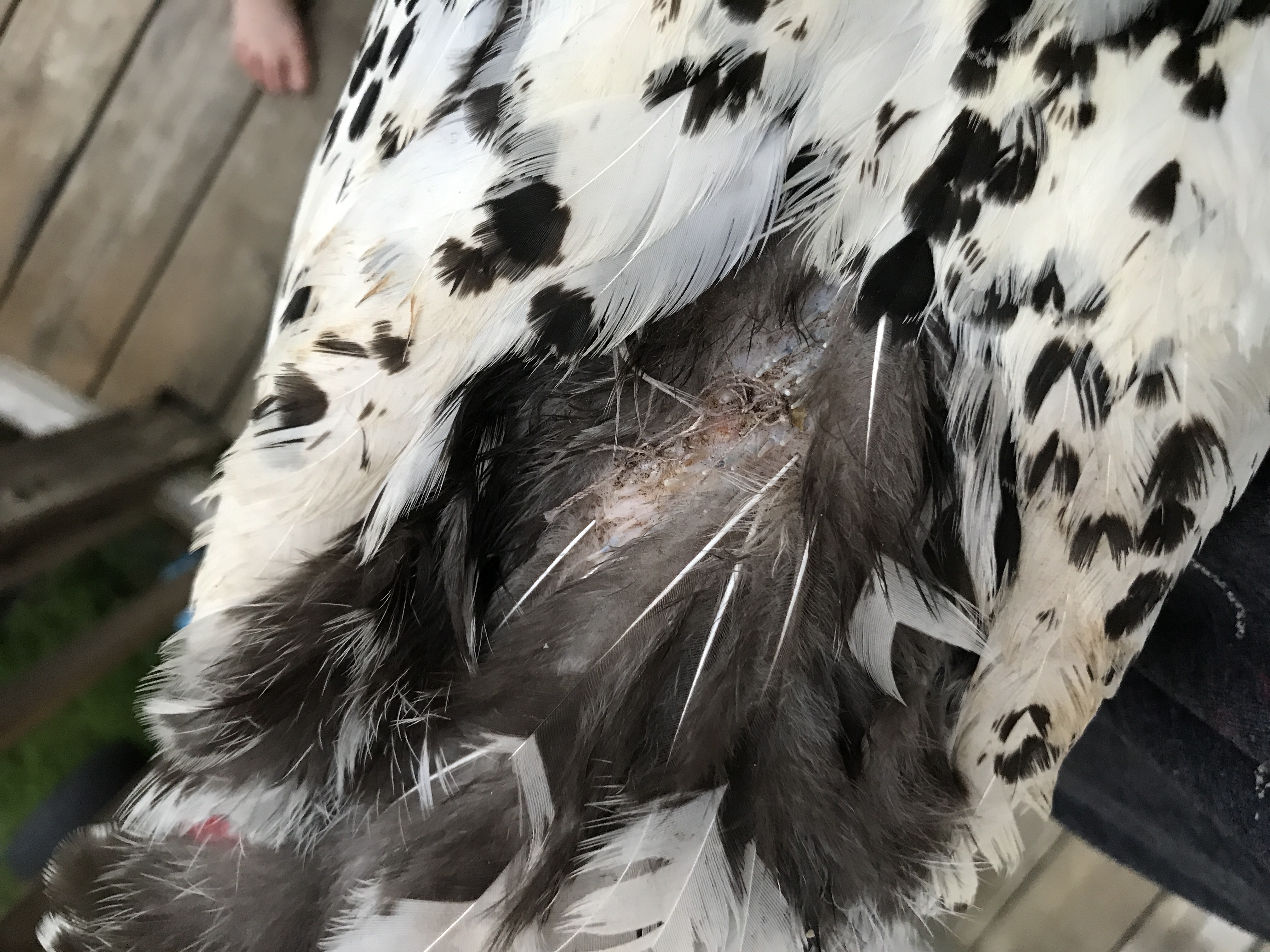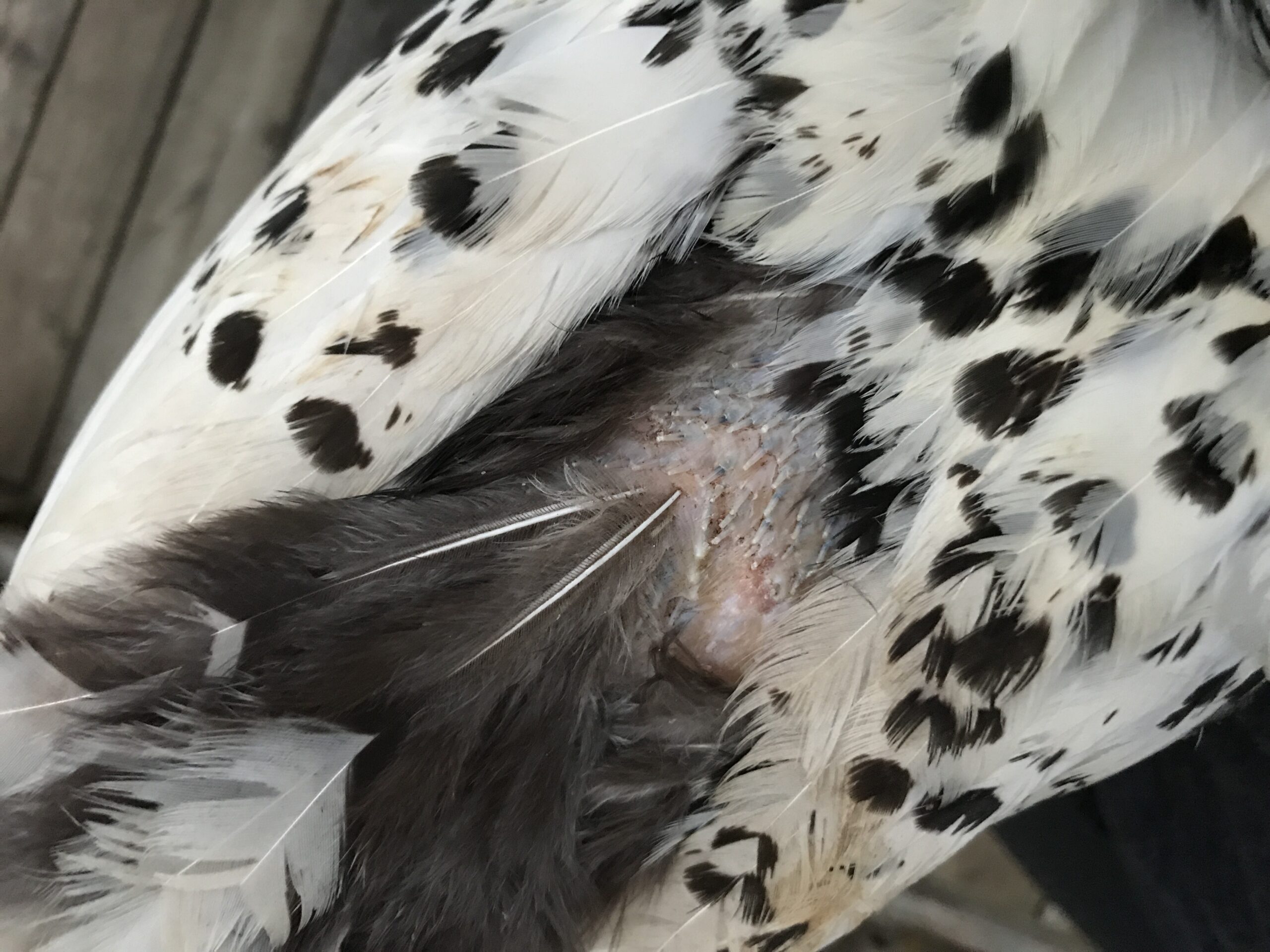Spitz and the Dog Attack
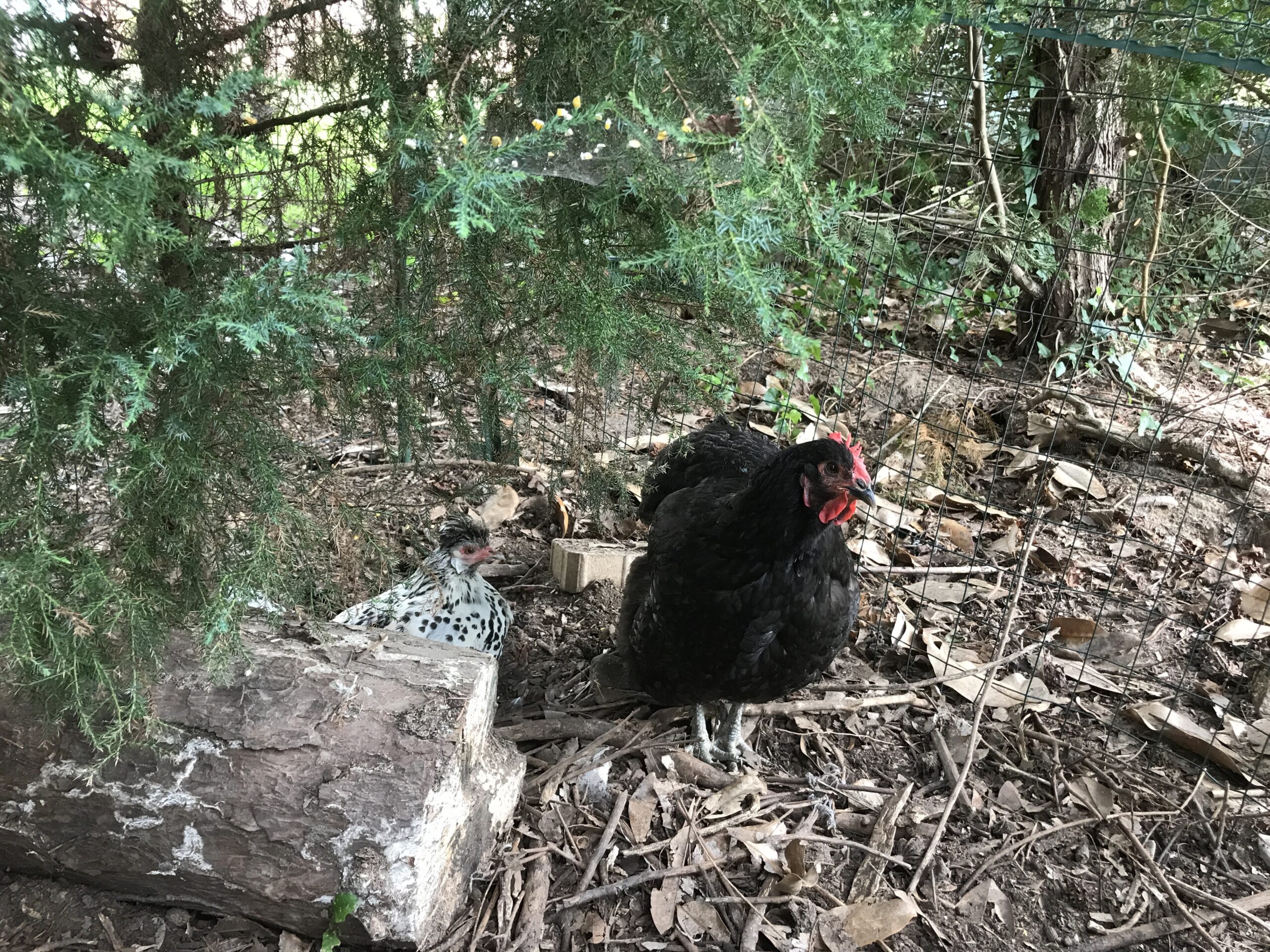
Many city dwellers go into chicken keeping only thinking of the eggs and the happy hens pecking around their yard. They prepare themselves for maintaining a clean coop, food and water but don’t think about how much trouble these ladies can get into or the hard decisions they as the caregiver will have to make.
We are several years in and are still experiencing firsts. We’ve had sick birds die and we’ve had one disappear in the night. I’ve administered feeding tubes, antibiotic injections and even sewn a chicken diaper for a sick, picked on Silkie. As a chicken keeper, you to develop fortitude and tolerance for things that would otherwise make you squeamish. Recently, I stepped it up a level.
On Sunday morning, I was working out in the front yard, and when I came around back, my oldest pointed out the pile of chicken feathers next to the firepit. We didn’t see any blood or flesh, and we couldn’t find Spitz hiding anywhere. There was only another small cluster of feathers on the other side of the firepit, which gave me a little sliver of hope that she had managed to escape. The Appenzeller Spitzhauben breed (national breed of Switzerland) is adapted for rugged living in the mountains. They are good fliers, roost in trees, are good at escaping from predators (and their chicken keepers). The general consensus was that Spitz, who lets herself out of the run daily, was carried off by a hawk or baby eagle that has been circling the neighborhood, but I didn’t shed any tears because I knew that girl was sneaky.
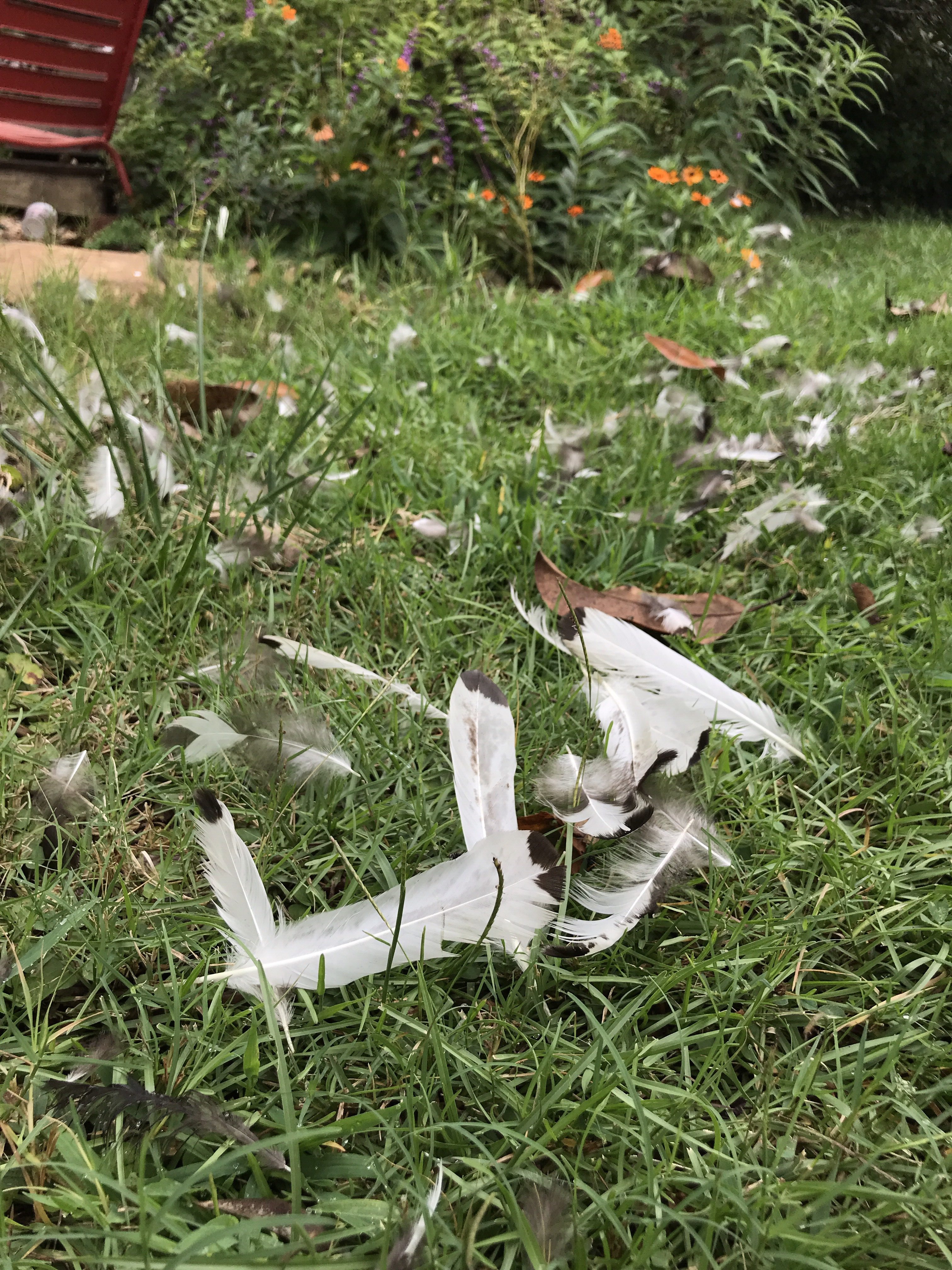
Later that afternoon when we returned from errands, I checked the chicken run and Spitz was there. Not only had she flown back into the coop, but she had also laid an egg. I could tell she was missing quite a few feathers and was hobbling a little, but hoped she was relatively unscathed. After I took her into the bathtub to rinse her wounds, I discovered her injury was pretty severe. There was a large bite mark with deep k9 puncture wounds. The skin was pulled back from the wounds, and the punctures were gaping open. She wasn’t bleeding too significantly, but I knew that these wounds needed to be closed to keep out bugs and curious beaks of her sisters. At first a cut up a steri-strip, but it wouldn’t adhere to her skin and feathers which were still a little damp from the cleaning. I pulled out my sewing box and started pulling her skin and muscle back together and stitching it closed as neatly as I could. A few stitches in, I had to get Joe to hold her still and hold the wound closed. It took about ten stitches to get the job done. Afterwards when I checked on her, she was shivering a bit, obviously in pain. Fortunately we had leftover painkiller from our cat’s dental surgery that was safe for poultry. Over the next two days, I gave her the painkiller and antibiotic injections.
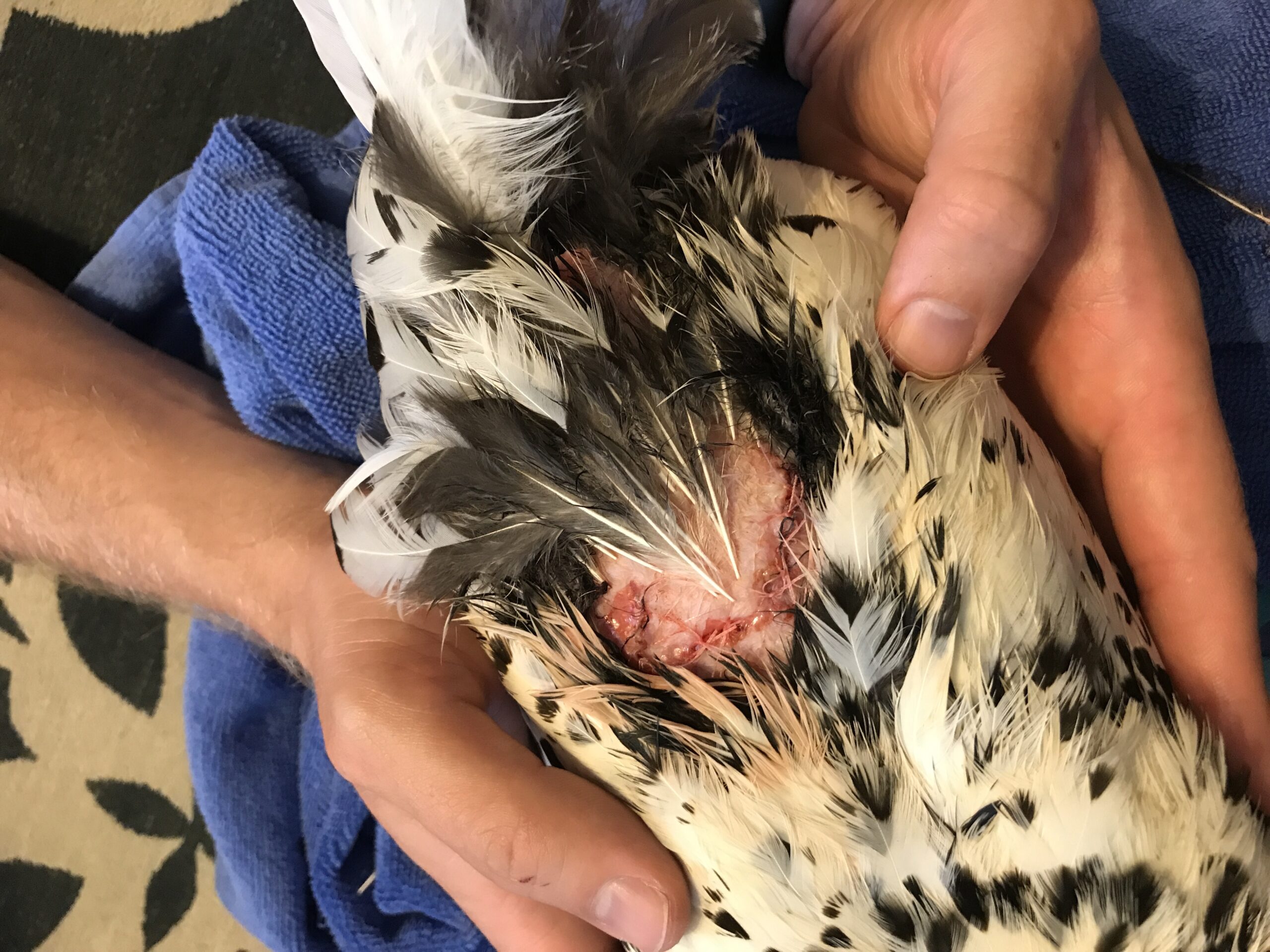
The next day when I was walking to pick up my youngest from school, a neighbor waved me down and cautioned me to be very careful as a pitbull had been lose in the woods across the street, and the people who were chasing him down had been unable to catch him. I’m assuming this was the same dog that has been charging other neighbors while out dog walking in the past few months.
A week later, Spitz’s wound appeared ready to have the stitches removed. It had healed up nicely, and the feather were already beginning to grow in. She’s quite a brave little chicken, but she hasn’t been leaving her run anymore. I think maybe she learned a lesson.
